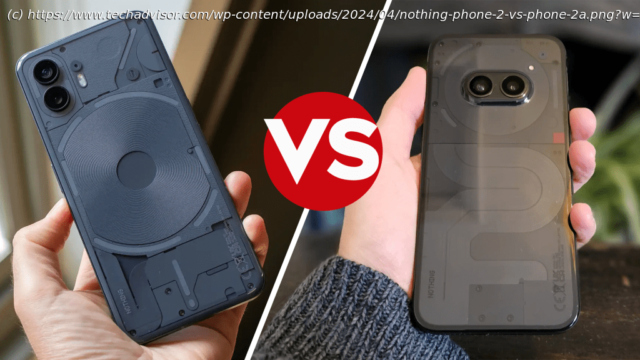Nothing is trying to conquer the mid-range market with both the Phone (2a) and Phone (2a) – does the cheaper phone offer everything you’re looking for?
Despite the challenging journey of breaking into the tech market, Nothing, founded by former OnePlus executive Carl Pei in 2020, has sparked considerable interest.
Despite releasing several models of earbuds, it’s the phones that have got most of the attention, notably the original Phone (1) and its successor, the Phone (2), which offered modest upgrades.
With the Phone (2a), Nothing ventures into new territory by presenting a more affordable alternative that still promises enhancements over the Phone (1) despite a lower price tag. The Phone (2a) aims to strike a balance between affordability and performance.
But how does it stack up against its higher-priced counterpart? Here’s whether the Phone (2) is worth the extra cash compared to the Phone (2a) – here’s how the two handsets stack up against each other.Differences between the Nothing Phone (2) and the Nothing Phone (2a)Design
The Phone (2) has a glass back, providing a glimpse of its internals alongside LED light strips that contibute to its eye-catching design. There are also two rear camera lenses that sit on the upper-left corner of the phone.
Despite its sleek aluminium frame and flat sides being reminiscent of premium devices, its dimensions (159.2 x 75.8 x 8.3mm) and weight (201g) may make it unwieldy for some people.
Additionally, its vibration motor and resultant haptics feedback is sub-par compared to many high-end phone, while an IP54 rating makes it less resistant to water and dust.
The Phone (2a) features a very similar design with a semi-transparent plastic back, maintaining the aesthetic of the Phone (2) while opting for a lighter 190g build. Its curved edges make it more comfortable to hold and make one-handed use (a rarity among modern smartphones) possible.
The scaled-back ‘Glyph Interface’ of LED lights (only three around the cameras) are more subtle compared to the Phone (2), but they have the same potential to be distraction. The cameras here are centrally located and resemble eyes, so won’t be to everyone’s tastes.
The plastic back feels less premium and is more prone to fingerprints, but its unibody design delivers improved durability compared to the Phone (2) – at least according to Nothing. As you might imagine, we didn’t intentionally drop or scratch either phone during testing.
While still a long way behind flagships, the Phone (2a)’s IP54 water resistance (protection against splashes of water and some dust) is the same as the Phone (2).
Ultimately, the choice between the Phone (2) and the Phone (2a) will depend on individual preferences regarding design, comfort and durability, plus whether you want the extra LED lights on the back.
The lights on both phones can be used for a variety of tasks, including displaying incoming calls and notifications, flashing along to music and checking progress of timers.Screen & Speakers
Both the Nothing Phone (2) and Phone (2a) feature a 2.4K, 6.7-inch AMOLED display. However, the Phone (2) offers a refresh rate of up to 120Hz with LTPO technology, meaning it can automatically drop as low as 1Hz to optimise battery life.
The Phone (2a) still provides a 120Hz refresh rate, but there’s no LTPO. The lowest it can go is 30Hz, which is still better than many phones, though manual options are only available for 60- or 120Hz.
Despite high maximum claims, both the Phone (2) and Phone (2a) struggle with outdoor visibility, especially in bright, sunny environments.
While both phones offer near-identical, impressive displays, the Phone (2) comes out on top thanks to its LTPO screen.
Both phones also include dual stereo speakers, which deliver punchy sound but lack in bass. They’re suitable for casual use, but not movie watching or serious music listening.Specs & Performance
The Phone (2) features the Qualcomm Snapdragon 8+ Gen 1 chipset, offering solid performance for various tasks – including gaming.
It offers configurations with 8- or 12GB of RAM and 128-, 256- or 512GB of internal storage. The in-screen fingerprint scanner and face unlock offer convenient biometric unlocking options, though the former is positioned relatively low on the screen.






